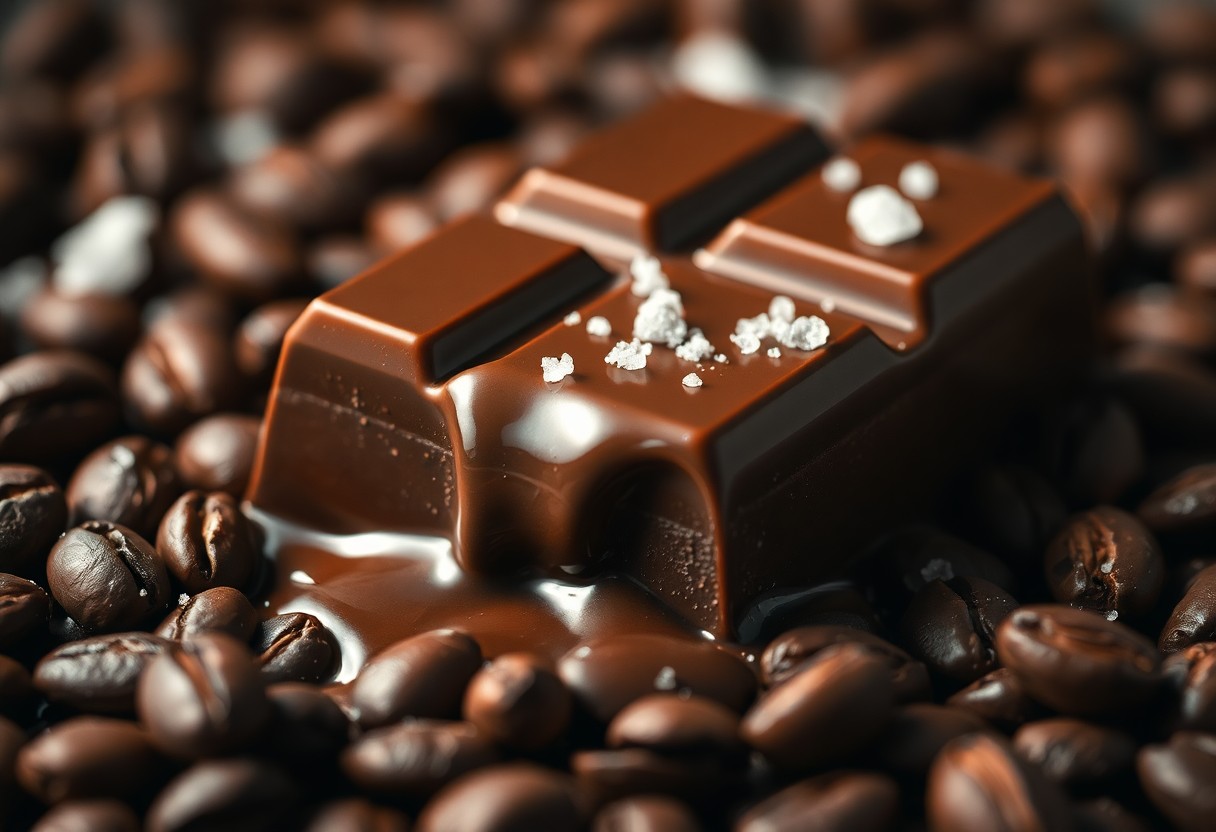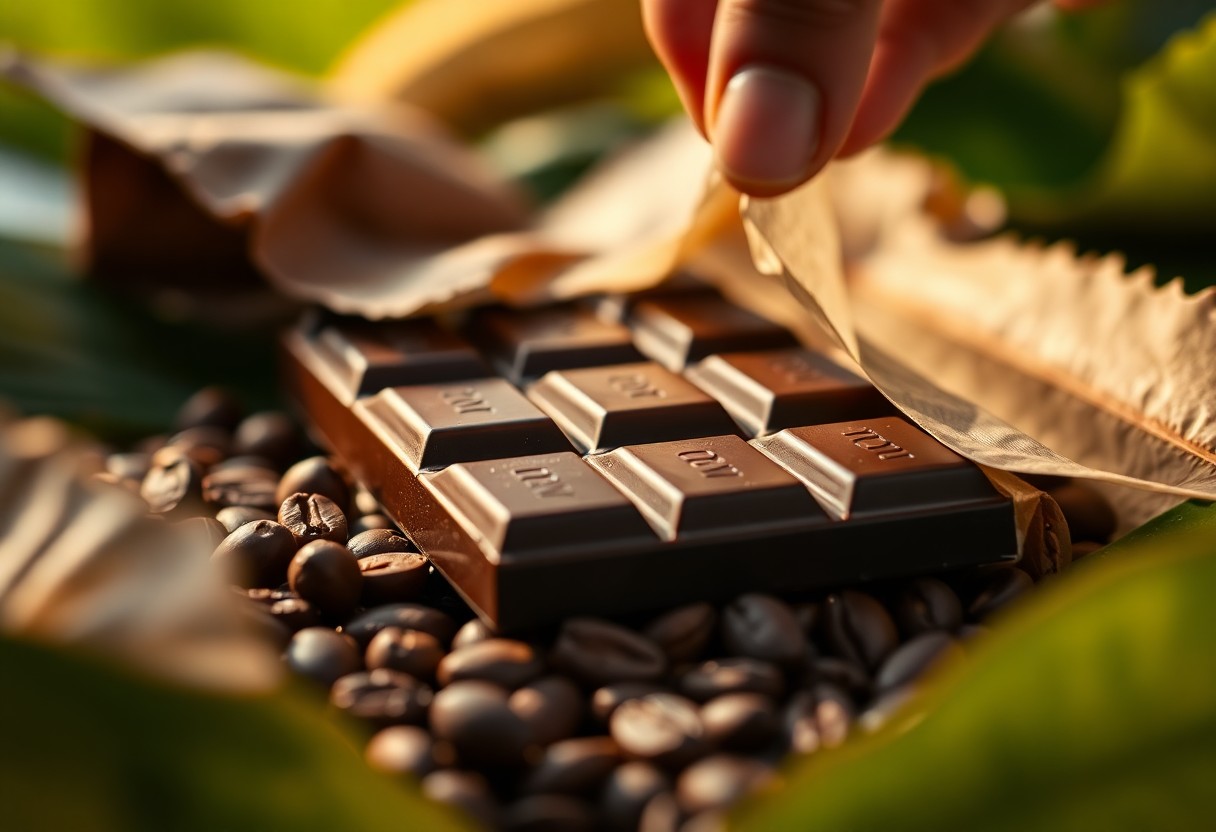Secrets about chocolate run deeper than its delightful taste, and you might be surprised by what lies beneath every bite. When you indulge in chocolate, you’re experiencing a complex journey that spans history, science, and culture. Understanding these sweet secrets can enrich your appreciation and reveal why this favorite treat captivates people worldwide. Join us as you uncover fascinating insights that bring the story of chocolate to life in ways you never expected.
From Bean to Bar: The Journey of Chocolate
Following the path from raw cacao bean to the chocolate bar you savor reveals a process rich in tradition and science. You witness how a small pod harvested from cacao trees undergoes fermentation, drying, roasting, and conching to develop the complex flavors you recognize. Every step influences the taste, texture, and quality, connecting you directly to the craftsmanship behind chocolate’s irresistible allure.
The Origins: Tracing Cacao’s Ancient Roots
Cacao’s story starts over 3,000 years ago in the tropical rainforests of Central and South America, where ancient civilizations like the Olmecs and Maya revered it. You’re actually touching history when you hold a cacao bean that echoes these cultures’ rituals and economies, as cacao was once considered a divine gift, used as currency and in ceremonial drinks long before becoming a globally loved treat.
The Processing: Transforming Bitter to Sweet
Raw cacao beans have a naturally bitter and astringent profile that undergoes radical change through processing. After harvesting, beans ferment for several days, breaking down enzymes and developing the vital chocolate flavor precursors. Drying and roasting follow, further intensifying aromas and reducing bitterness, while conching smooths texture and refines taste. Each stage tailors the final complexity and sweetness that you enjoy in your favorite chocolate.
Delving deeper into processing, fermentation’s role can’t be overstated; it’s where microbial activity transforms the pulp surrounding beans into flavor compounds. Roasting temperatures, ranging between 250 to 350°F (120 to 175°C), vary depending on bean origin and desired flavor notes. Conching, lasting hours to days, involves continuous mixing and aeration, mellowing acidity and producing the silky mouthfeel you associate with premium chocolate. Manufacturers meticulously adjust these steps—small changes can result in bold, fruity notes or rich, nutty undertones tailored specifically for your palate.
The Nutritional Code: Decoding Chocolate’s Components
Chocolate is a complex blend of fats, sugars, proteins, and bioactive compounds. The primary ingredient, cocoa solids, contains antioxidants like flavonoids, which contribute to your overall health. Cocoa butter adds creamy texture through saturated and monounsaturated fats. Meanwhile, sugar and milk vary widely in different types of chocolate, shifting its nutritional profile. Understanding these components helps you evaluate chocolate beyond its sweet taste, revealing how it interacts with your body and contributes to your daily nutrient intake.
The Good: Health Benefits You Didn’t Know About
Dark chocolate, containing at least 70% cocoa, offers more than indulgence; it’s packed with antioxidants that combat free radicals, reducing inflammation and improving heart health. Flavanols support blood vessel function, lowering blood pressure and enhancing circulation. Some studies link moderate chocolate consumption to better cognitive function and mood elevation by triggering endorphin release. When you choose high-quality, minimally processed chocolate, you tap into a treat that can boost your well-being in subtle but meaningful ways.
The Bad: The Impact of Sugar and Additives
Many chocolate varieties are loaded with sugars and artificial additives that offset the potential health benefits. Excess sugar intake is linked to weight gain, insulin resistance, and increased risk of diabetes, counteracting the positive effects of cocoa flavonoids. Additives like hydrogenated fats and emulsifiers can affect metabolic health and contribute to inflammation. By scanning ingredient lists, you can avoid chocolates that prioritize sweeteners and fillers over nutrient-rich cocoa content.
Delving deeper, you’ll find that some cheaper chocolates contain sugar levels upwards of 50-60%, far surpassing recommended daily limits. These sugars act not only as sweeteners but also as preservatives and texture enhancers, masking the true quality of the chocolate. Artificial flavors and stabilizers further dilute cocoa’s natural benefits, affecting your digestive health and potentially triggering sensitivity reactions. Choosing chocolates with simple, natural ingredients allows you to harness cacao’s richness without the health compromises brought by excess sugar and additives.

Economics of Chocolate: How Market Trends Influence Price
Your favorite chocolate’s price is shaped by a complex web of global market forces, from crop yields in West Africa—where about 70% of the world’s cocoa is harvested—to consumer demand spikes during holiday seasons. Economic unrest, trade policies, and shifting weather patterns all ripple through the supply chain, causing fluctuations in cost. As a buyer, understanding these dynamics explains why that chocolate bar might cost more or less over time, reflecting not only raw material scarcity but also broader economic trends and ethical sourcing efforts.
The Bean Monopoly: Exploring Cacao Sustainability
Chocolate’s foundation—the cacao bean—faces its own economic monopoly, heavily concentrated in a few countries like Côte d’Ivoire and Ghana. Growing concerns over deforestation, fair wages, and child labor have pushed companies and consumers to demand sustainable cacao. Certification programs like Fair Trade and Rainforest Alliance influence market prices and encourage ethical farming, but they also add to costs. By choosing sustainably produced chocolate, you participate in reshaping market forces toward environmental preservation and social responsibility.
Price Fluctuations: What Drives Chocolate Costs Up and Down
Volatile weather, pest outbreaks, and political instability in cacao-producing regions often cause sudden shortages, pushing prices upward. Conversely, bumper harvests or increased global production can lead to price drops. Currency exchange rates, tariffs, and changes in consumer preferences further complicate pricing. You might notice that during economic downturns, premium chocolates hold their price better due to loyal customer bases valuing quality and ethics over cost.
Diving deeper, cocoa futures markets play a significant role in driving price volatility, as traders speculate on future supply and demand. For example, droughts in West Africa can trigger price surges well before harvest, while speculation during critical periods magnifies swings. Meanwhile, labor shortages and rising wages in producing countries increase production costs, a factor often passed on to consumers like you. These fluctuating inputs ensure that chocolate pricing remains a dynamic reflection of both global economic conditions and localized agricultural challenges.
Cultural Significance: Chocolate as a Global Icon
Chocolate has transcended its role as a mere treat to become a universal symbol of indulgence, love, and celebration. Across continents, it intertwines with cultural narratives—from Mesoamerican cacao rituals to European confectionery mastery—highlighting its unique position in global customs. Its presence in art, literature, and media further cements chocolate’s status not just as a flavor but as a cultural emblem that evokes emotion, tradition, and connection wherever you encounter it.
Celebrations and Rituals: The Role of Chocolate in Traditions
You’ll find chocolate playing a starring role in festivals and rites of passage worldwide. In Mexico, Day of the Dead celebrations include chocolate sweets to honor ancestors, while in Europe, Easter chocolates symbolize renewal. Wedding ceremonies often feature chocolate as gifts or favors, embedding it into moments of joy and remembrance. These traditions show how chocolate shapes your experience of cultural identity and communal bonding through its rich symbolism and irresistible appeal.
A Taste of Luxury: Branding and the Chocolate Experience
The branding of chocolate elevates it from a simple confection to a sensory journey. Renowned chocolatiers like Valrhona and Godiva craft narratives of exclusivity and refinement, influencing how you perceive flavor and quality. Packaging design, limited edition releases, and origin storytelling enhance your sense of luxury, enticing you to savor each bite as a curated experience rather than just a snack.
Delving deeper, luxury chocolate brands often emphasize single-origin cacao sourced from specific regions like Madagascar or Ecuador, highlighting terroir much like fine wine. They invest heavily in artisan techniques—like conching and tempering—that refine texture and aroma. Marketing campaigns frequently align with lifestyle aspirations, pairing chocolate with moments of relaxation or celebration. This strategic positioning shapes your expectations and deepens emotional attachment, turning chocolate consumption into a personal indulgence that resonates beyond taste alone.

Future Innovations: The Next Frontier in Chocolate Making
Chocolate is evolving beyond its classic recipes, embracing new technologies and sustainability goals. You’ll find innovations like lab-grown cocoa cells that cut down on environmental impact, and fermentation techniques unlocking richer flavor profiles. Plus, personalized chocolate experiences where your taste preferences shape the final bar. These breakthroughs are redefining how chocolate is produced, enjoyed, and appreciated, promising exciting developments that blend tradition with future-forward science.
Plant-Based Alternatives: The Rise of Vegan Chocolate
Vegan chocolate has surged in popularity as you seek dairy-free options that still capture chocolate’s rich essence. Crafted using plant milks like oat or almond, these alternatives offer creamy textures without animal products. Innovations in plant-based fats and emulsifiers now allow vegan chocolates to rival traditional varieties in taste and mouthfeel, making them a delicious choice whether you follow a plant-based lifestyle or simply want to explore new flavors.
Tech and Taste: How Science is Shaping Chocolate’s Future
Scientific advancements are tailoring chocolate to your unique preferences and health needs like never before. Techniques such as 3D printing enable custom shapes and intricate designs, while molecular analysis helps refine flavor compounds for optimal balance. You’ll also encounter smart packaging that monitors freshness and interactive experiences merging chocolate tasting with virtual reality. Science is not just making chocolate tastier but transforming your entire sensory journey.
Delving deeper, researchers at institutions like the Barry Callebaut chocolate development center are using flavor chemistry to isolate key taste molecules, enabling chocolatiers to amplify desired notes such as fruity, nutty, or floral without adding sugars or fats. Advanced fermentation controls imitate traditional processes but achieve consistent quality batch after batch. Meanwhile, biotechnological innovations manipulate cocoa genome sequences to breed plants resistant to diseases and climate challenges, securing your chocolate supply for decades ahead. These scientific strides ensure your chocolate indulges both palate and sustainability.
Conclusion
To wrap up, exploring Chocolate Facts – Unraveling the Sweet Secrets Behind Everyone’s Favorite Treat reveals how this beloved delicacy is more than just a tasty indulgence. You now understand its rich history, unique production process, and surprising health benefits, which deepen your appreciation for every bite you enjoy. By knowing these sweet secrets, you’re closer to fully savoring chocolate’s complexity, making your experience with this treat even more delightful and informed.